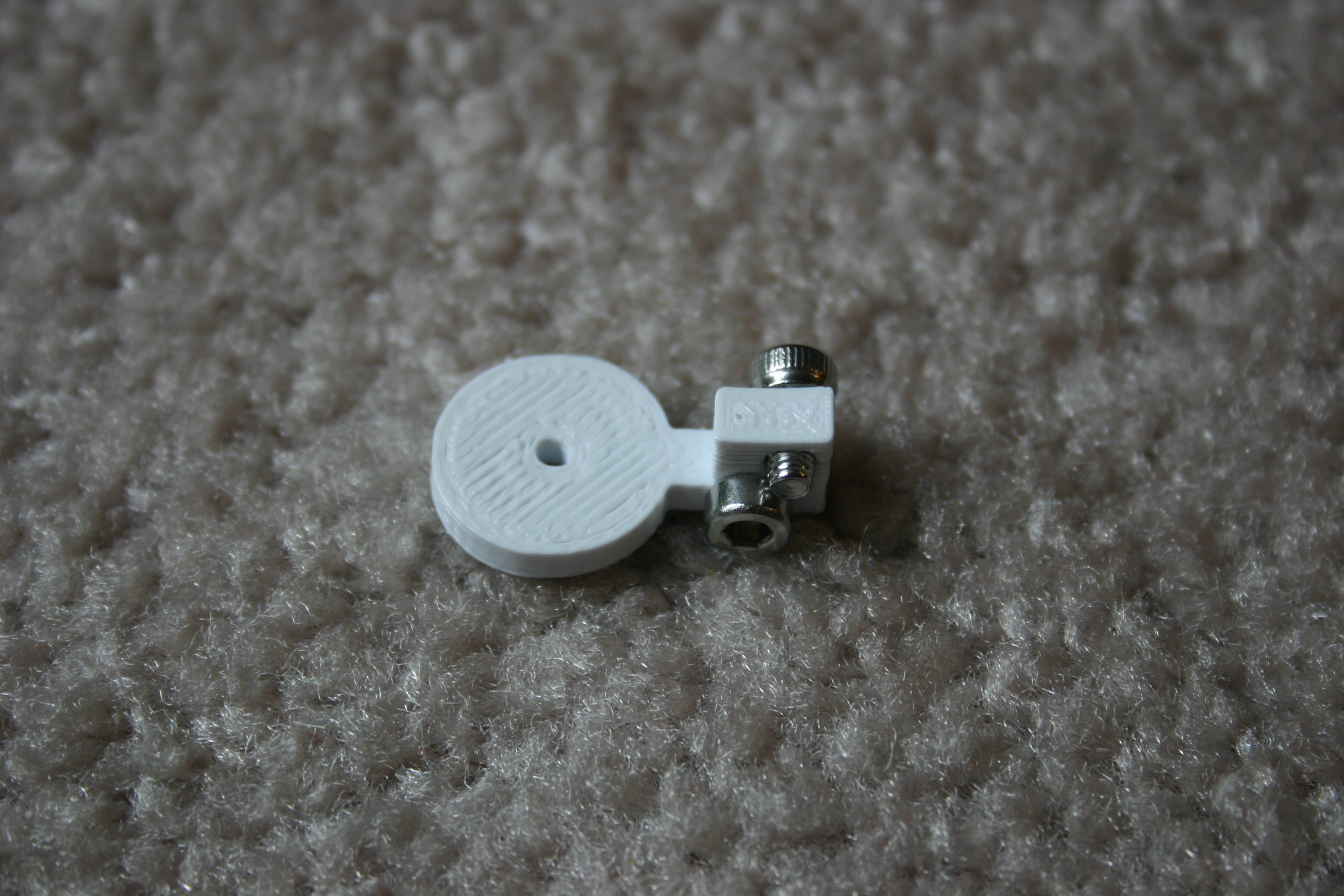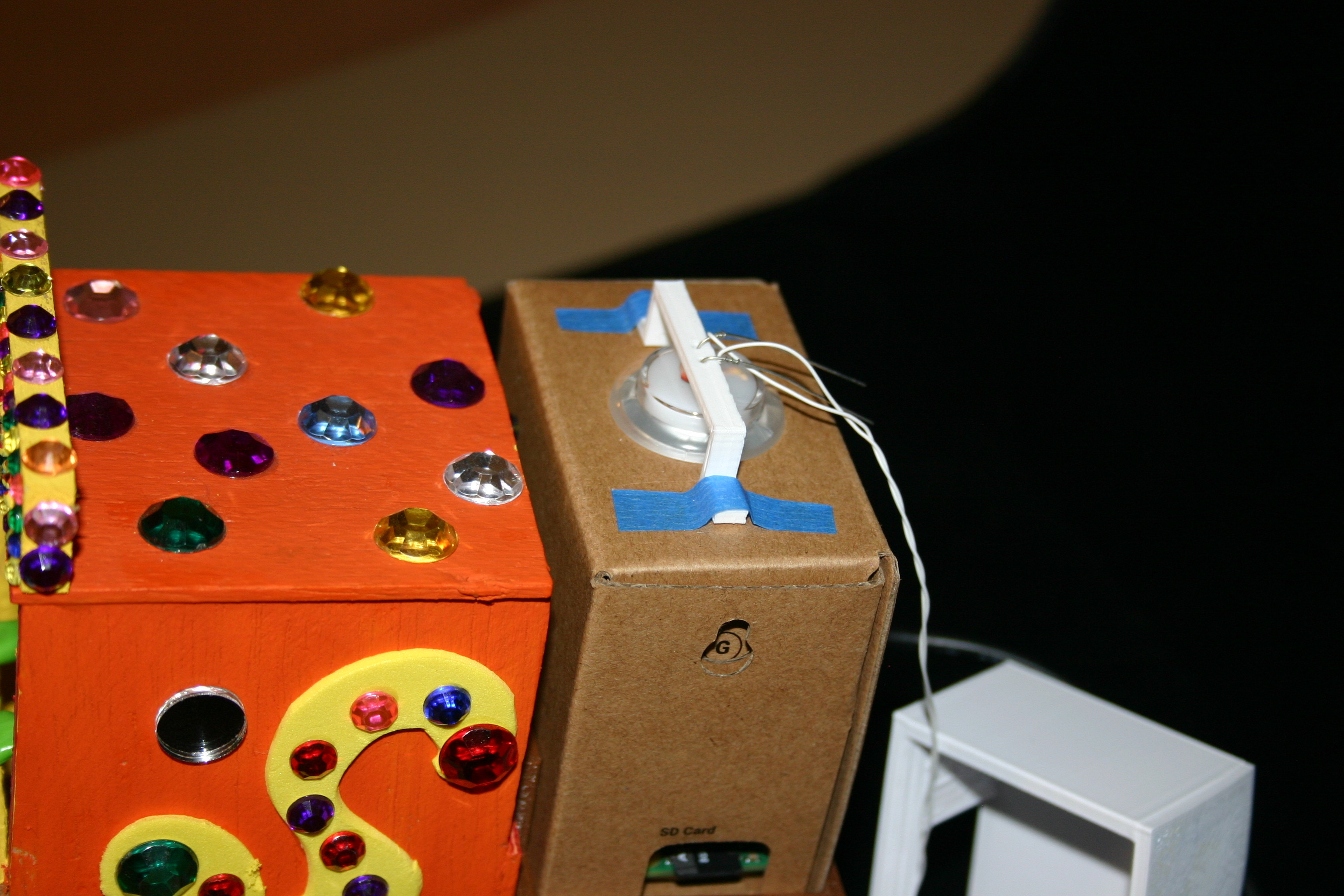Croakers' Chronometer
About the project
Smile at the frogs and they will vibrate in a manner that can be translated into the current time.
Project info
Difficulty: Difficult
Estimated time: 1 day
Story
Frogs "looking up" represent hours in binary (left to right; 8,4,2,1).
Frogs "looking forward" represent minutes in binary multiplied by five (left to right; 40, 20, 10, 5).
Smiles are detected by a Google AIY vision kit (camera behind the frog in the booth).
Frogs were made by my wife, Annelle, using polymer clay. They were part of the "Froggy World" project a few years ago.
Supplies:
Google AIY vision kit
(2) Arduino Uno
5 volt power supply (5 amp)
(8) micro motors (3 volt)
Pushbutton switch
Polymer clay
3d printed parts
Relay
(8) 2n3904 transistors
(8) 1n4007 diodes
(8) 100 ohm resistors
Photo resistor
1/4 inch plywood
(16) 3mm x 6mm screws
Paint
Wire
Solder
Files can be found here.
Step 1:

The Google AIY Vision kit includes smile detection in the default setup mode. The "hat" atop the cardboard Google assembly is a LED button that changes color when a smile is detected. A photo resistor can be used to detect that change. With "no face," I measured 12 K ohms across the photo resistor. With "face detected," 1.8 K shows up on the photo resistor. With "smile detected," .6 K is measured on the photo resistor.
Detecting a smile causes a relay to operate, providing power to the motors that shake the frogs.
Step 2:


Print and assemble the lilypad spacers.
Step 3:

Cut the top from plywood. Drill holes and paint.
Step 4:

Solder wire wrap wire to the motors.
Step 5:

Insert the motor into the canister.
Step 6:

Screw 3mm screws into the "wobbler."
Step 7:

Press the wobbler onto the motor shaft.
Step 8:


Run the motor wires through plastic bolts that have been inserted in the top of the lilypad.
Step 9:

These bolts prevent the cans from turning around and moving out of position when vibrating.
Step 10:

Insert the cans on the pad.
Step 11:

Glue a piece of wood to the lower lilypad base.
Step 12:


Add velcro to the wood and attach the lower and upper lilypads.
Step 13:


Wire according to the schematic diagram in step #2.
Step 14:


Place the cap over the top of the Google AIY Vision kit--we don't want ambient light to impact smile detection.
Step 15:

Secure the frogs using duct tape.
Step 16:

Velcro the "Smile Booth" to the lilypad--angled upward so that the camera will "see" someone looking at the clock.
Smile . . . then perform binary math and multiplication to tell the time :)




















Leave your feedback...